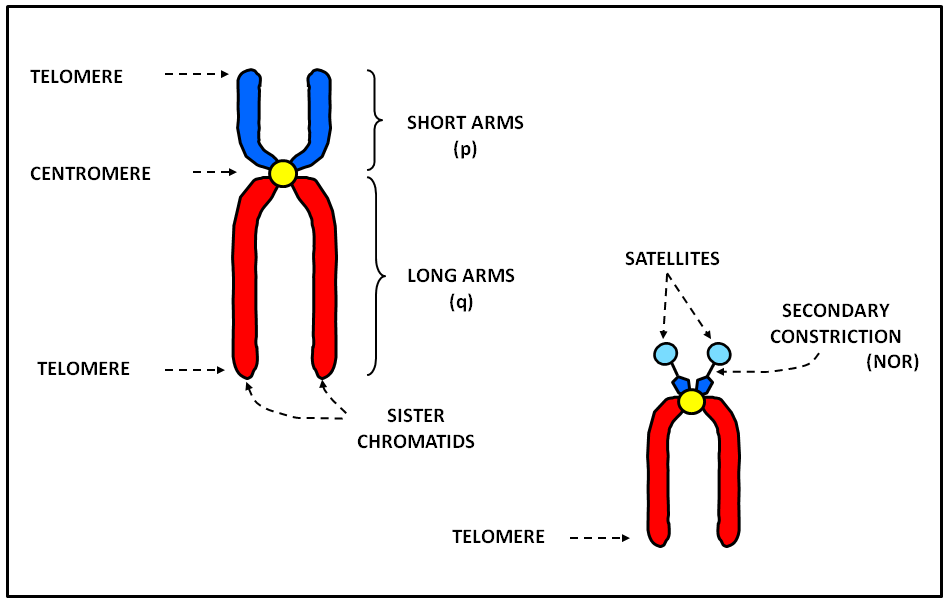
Structure and types of the eukaryotic chromosomes WikiLectures
4 types of chromosomes are: Sub metacentric chromosomes: These are chromosomes whose centromere is present near the middle and divides the chromosome into two unequal arms. It is an L-shaped chromosome. Most chromosomes in humans are submetacentric, e.g. 2nd, 4th to 12th, 17th, 18th, and X chromosomes. Acrocentric chromosomes:
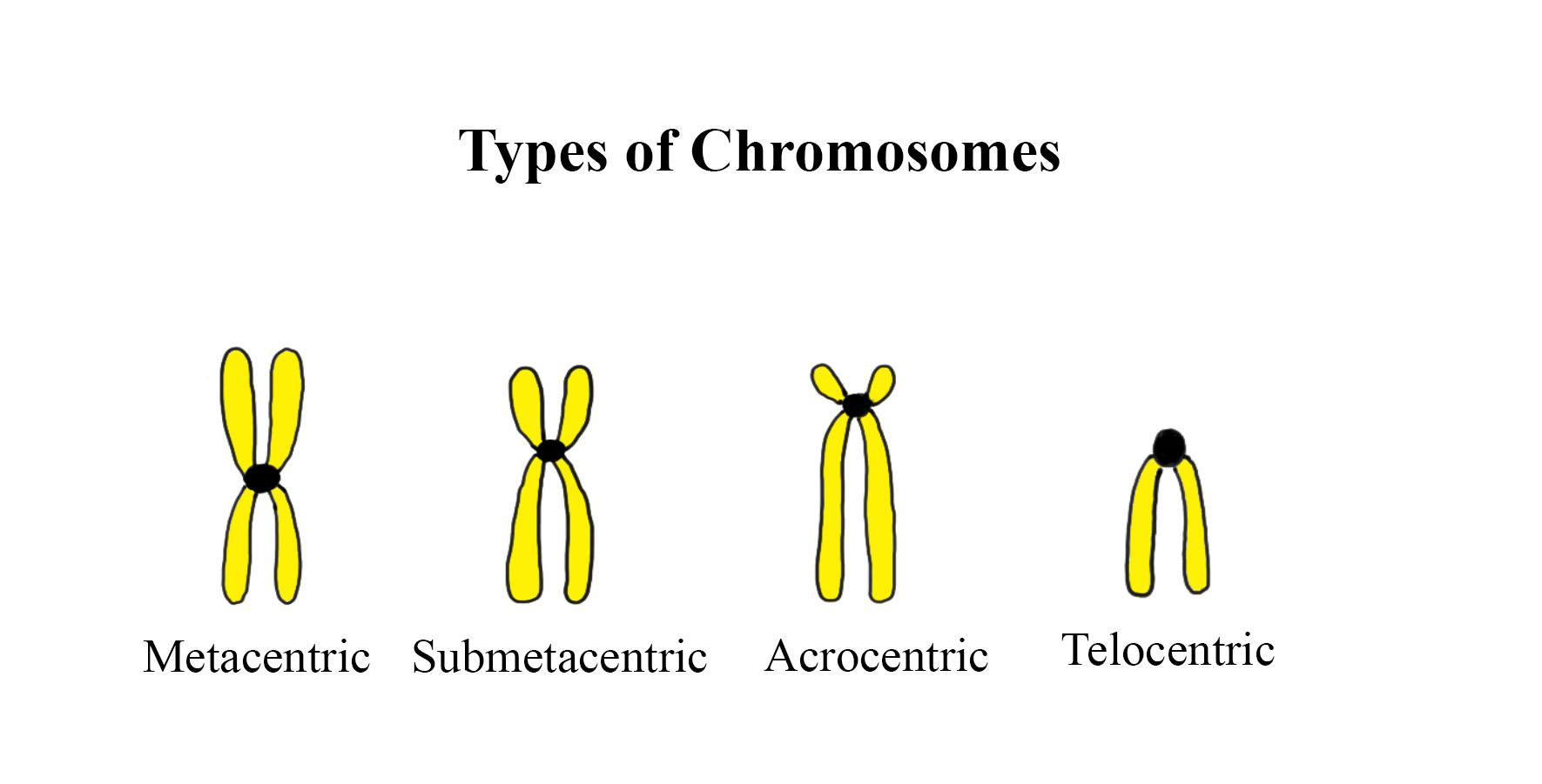
Chromosomes are classified based on the position of the centromere. A
There are four main types of chromosomes: metacentric, submetacentric, acrocentric, and telocentric. Chromosomes are found within the nucleus of most living cells and consist of DNA that is tightly wound into thread-like structures. Additional protein structures called histones support the DNA molecule within the chromosome. Chromosomes and DNA

Chromosome Definition, Structure, Types and Function Biology Ideas
Types of Chromosomes A. Autosomes and Sex Chromosomes B. On the Basis of Number of Centromeres C. On the Basis of Location of Centromere Prokaryotic Chromosomes Eukaryotic Chromosomes a. Nucleosomes b. 30 nm fiber c. Radial loops Nucleosome Model of Chromosome Features of the Nucleosome Model of Chromosomes The Folding of the DNA
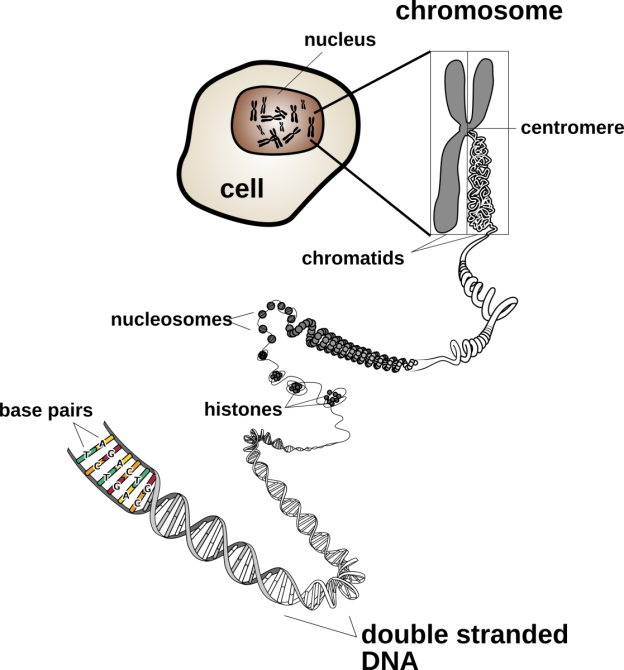
Chromosomes and Karyotypes Biology OER
The 46 chromosomes of a human cell are organized into 23 pairs, and the two members of each pair are said to be homologues of one another (with the slight exception of the X and Y chromosomes; see below). Human sperm and eggs, which have only one homologous chromosome from each pair, are said to be haploid ( 1n ).

classification of chromosomes centromere, chromosome classifications
Each chromosome is made of protein and a single molecule of deoxyribonucleic acid (DNA). Passed from parents to offspring, DNA contains the specific instructions that make each type of living creature unique. The term chromosome comes from the Greek words for color (chroma) and body (soma).
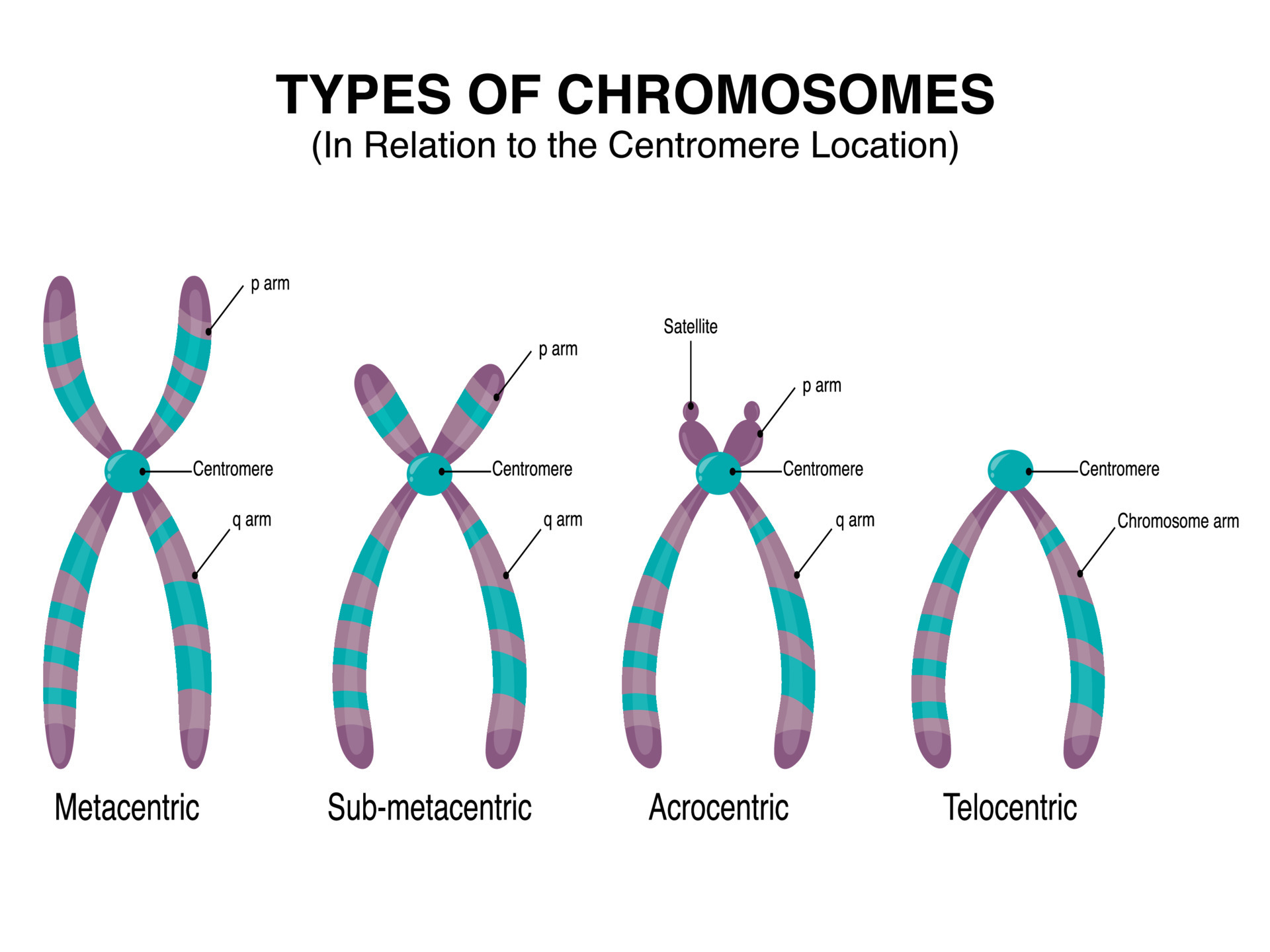
Types of Chromosomes in relation to the centromere location 7508619
Figure 1. Double-stranded DNA wraps around histone proteins to form nucleosomes that have the appearance of "beads on a string.". The nucleosomes are coiled into a 30-nm chromatin fiber. When a cell undergoes mitosis, the chromosomes condense even further. DNA replicates in the S phase of interphase.
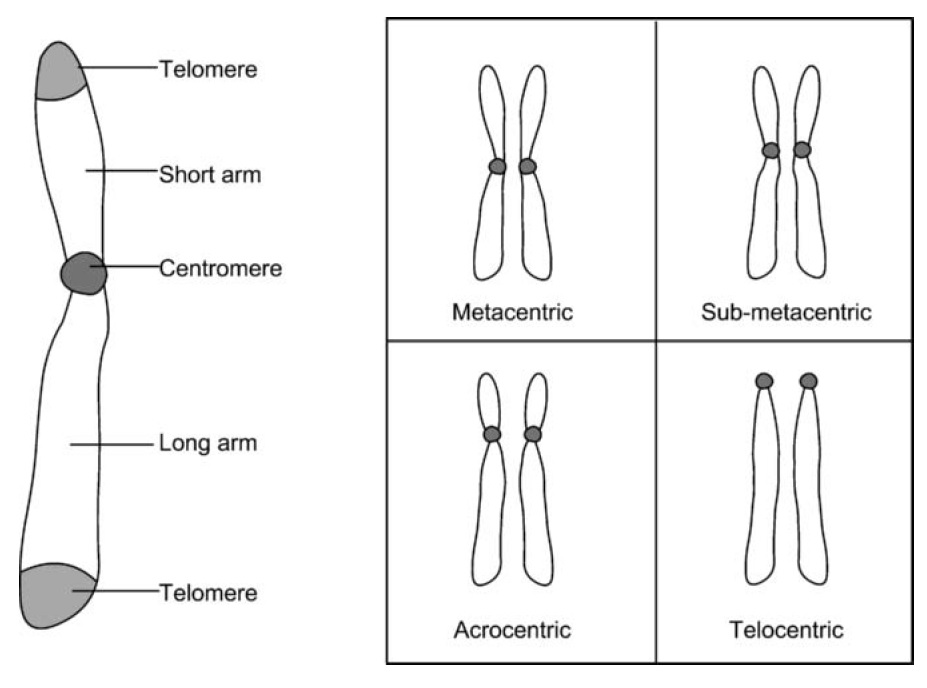
Chromosomes Introduction, Structure & Types A Level Biology Notes
Chromosome 4 Chromosome 4 is one of the 23 pairs of chromosomes in humans. People normally have two copies of this chromosome. Chromosome 4 spans more than 193 million base pairs (the building material of DNA) and represents between 6 and 6.5 percent of the total DNA in cells . Genomics The chromosome is ~193 megabases in length.
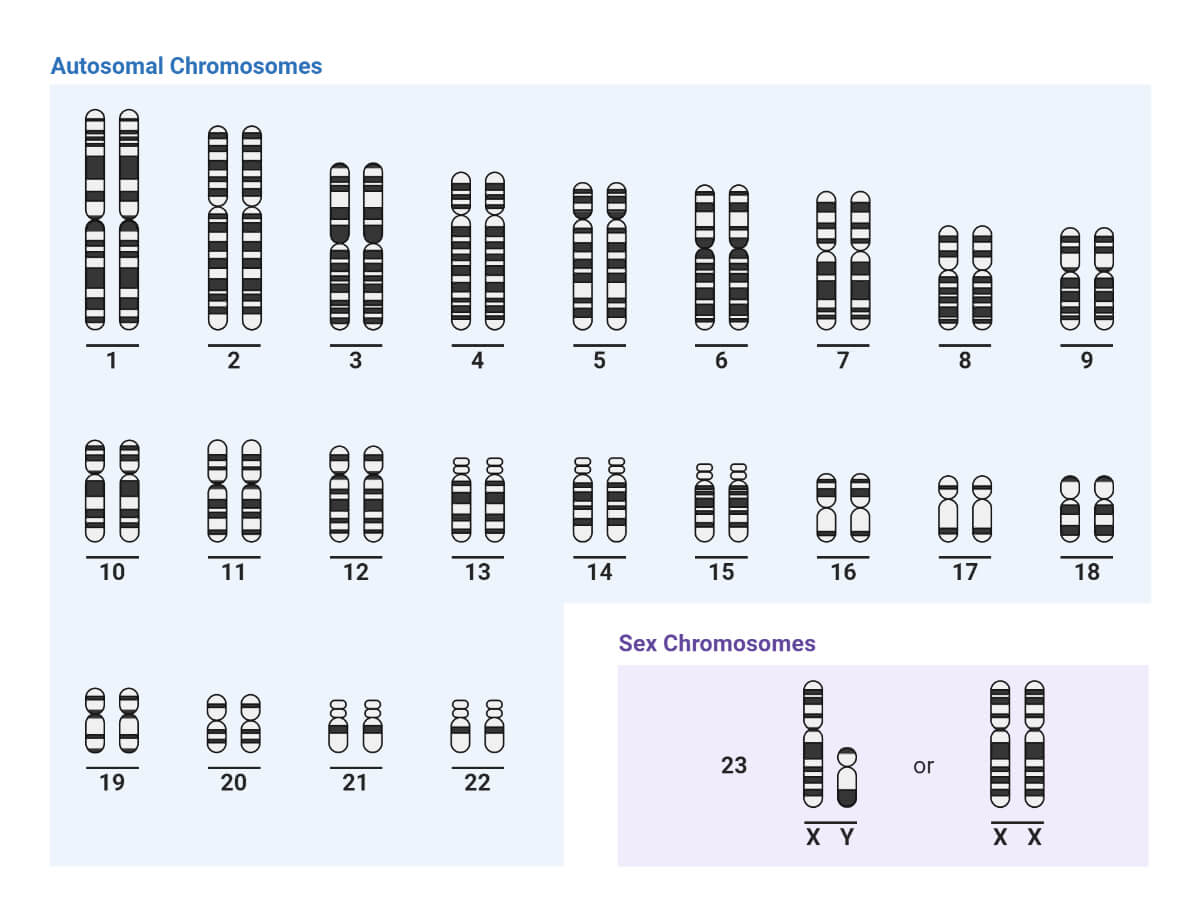
Chromosomes Definition, Structure, Types, Model, Functions
Some species of plants have four or more copies of each chromosome. Bacteria have just a single chromosome, arranged in a ring. Species also differ in how chromosomes specify sex. In birds, the sex chromosomes are called Z and W. Females are ZW and males are ZZ. The tiny roundworm C. elegans has just one type of sex chromosome called X. Those.

Chromosome definition, structure, types, and composition Javatpoint
Chromosome Types. Chromosomes are divided into two parts (p and q arms) with a constriction point called a centromere in the middle. The centromere can be located in different positions and this forms the basis for the four different classes of chromosome: Metacentric - centromere is in middle, meaning p and q arms are of comparable length (e.
:max_bytes(150000):strip_icc()/140891584-56a2b41a5f9b58b7d0cd8cc9.jpg)
4 Types of Chromosome Mutations Evolution and
Types of Chromosomes There are different types of chromosomes present in a cell during a particular stage of cell division. We shall learn about these chromosome types in the article discussed below. Home / Uncategorized / Types of Chromosomes Like it? Share it!

Four Types Human Chromosome Stock Vector (Royalty Free) 2264978595
Ultimately, of the four cells produced by this meiosis, two will be normal, one will have a chromosome with extra genes, and one will have a chromosome missing some genes. Errors of this type can also cause inversions and translocations. Figure 5.2.4 5.2. 4: Errors during meiotic crossovers can cause duplications and deletions.
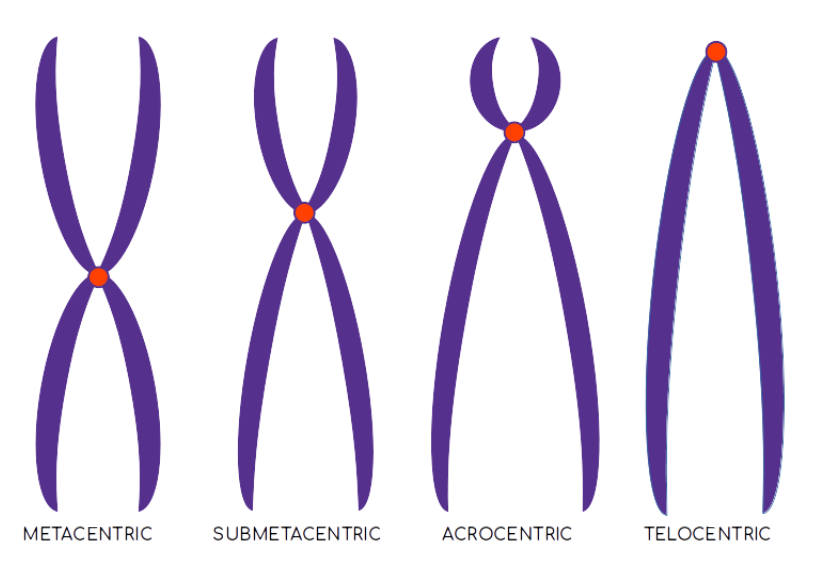
Types Of Chromosomes
Genes and Chromosomes. Genes are segments of deoxyribonucleic acid (DNA) that contain the code for a specific protein that functions in one or more types of cells in the body or the code for functional ribonucleic acid (RNA) molecules. Chromosomes are structures within cells that contain a person's genes.

Chromosome Structure Biology for Majors I
Chromosome 4 Description Humans normally have 46 chromosomes in each cell, divided into 23 pairs. Two copies of chromosome 4, one copy inherited from each parent, form one of the pairs. Chromosome 4 spans about 191 million DNA building blocks (nucleotides) and represents more than 6 percent of the total DNA in cells.
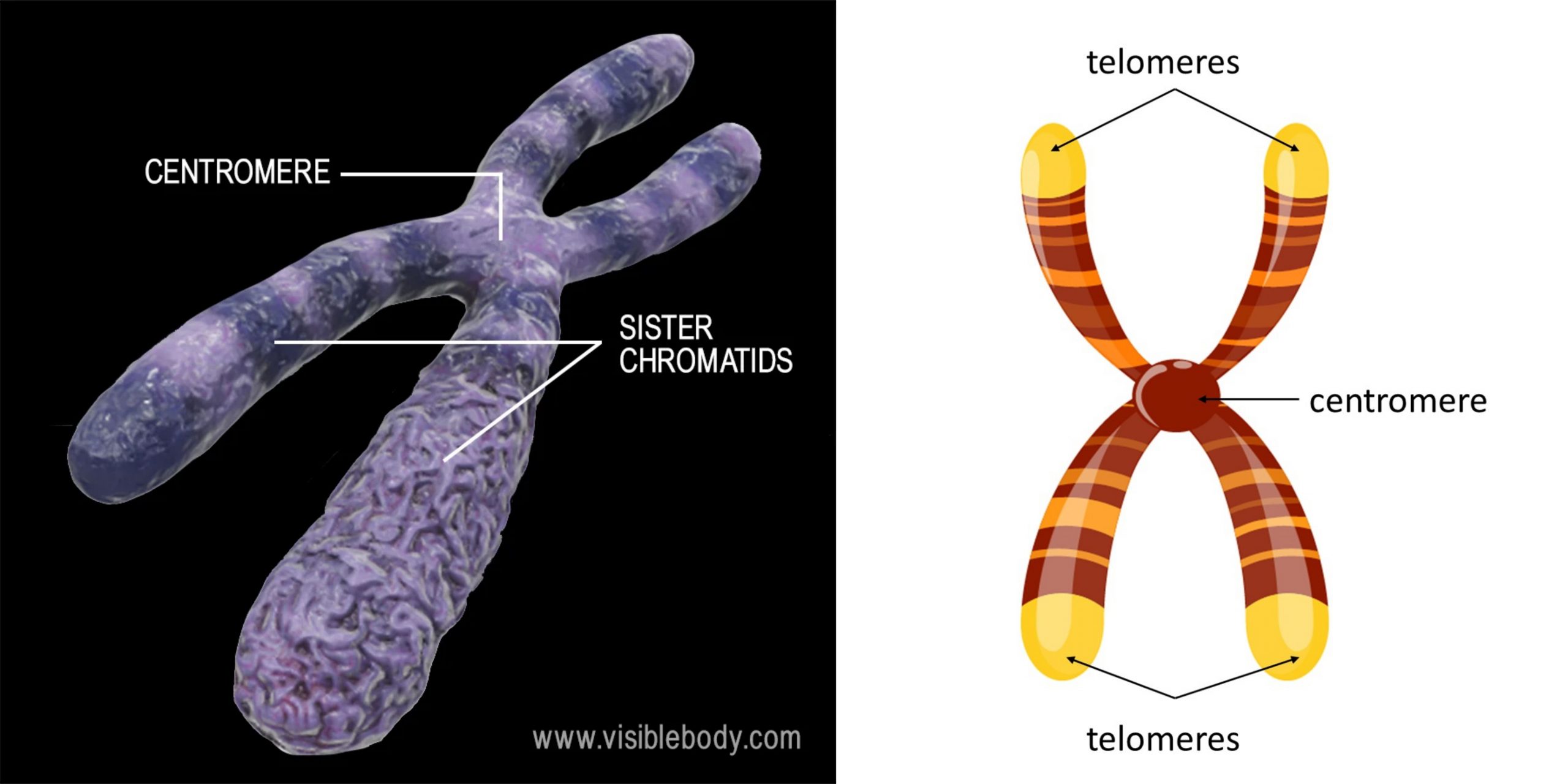
Chromosome Definition, Function, Structure, Types
NIH HHS USA.gov A chromosome is a DNA molecule that contains the genetic information for an organism. The chromosomal structure is composed of the organism's DNA and special proteins to form the dense, coiled architecture. The chromosome's tertiary structure is a crucial component in transcription regulation and cellular replication, and division.
:max_bytes(150000):strip_icc()/157181951-56a2b41a5f9b58b7d0cd8cc4.jpg)
4 Types of Chromosome Mutations Evolution and
Chromosome number. Different species have different numbers of chromosomes. For example, humans are diploid (2n) and have 46 chromosomes in their normal body cells. These 46 chromosomes are organized into 23 pairs: 22 pairs of autosomes and 1 pair of sex chromosomes. The sex cells of a human are haploid (n), containing only one homologous.

What are the 4 types of chromosomes?
4 Types of Chromosome Mutations -Evolution and Genetics Science, Tech, Math › Science Chromosome Mutations By Heather Scoville Updated on May 09, 2019 Microevolution is based on the changes at a molecular level that cause species to change over time.